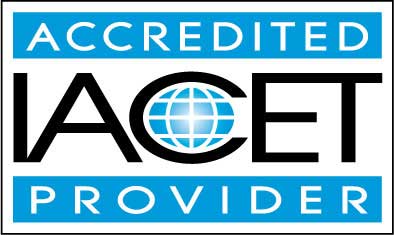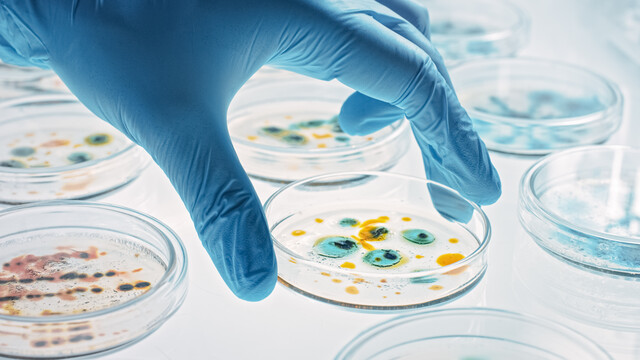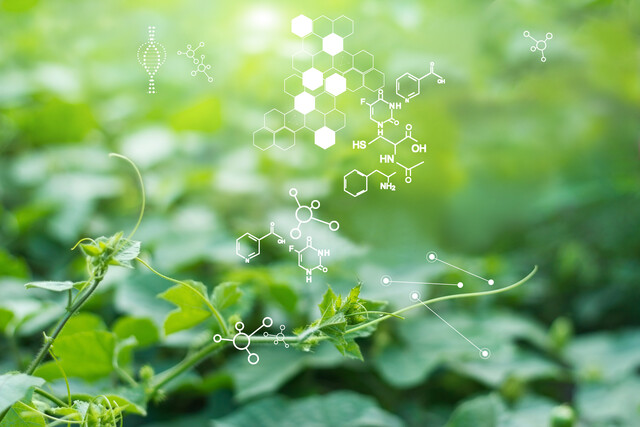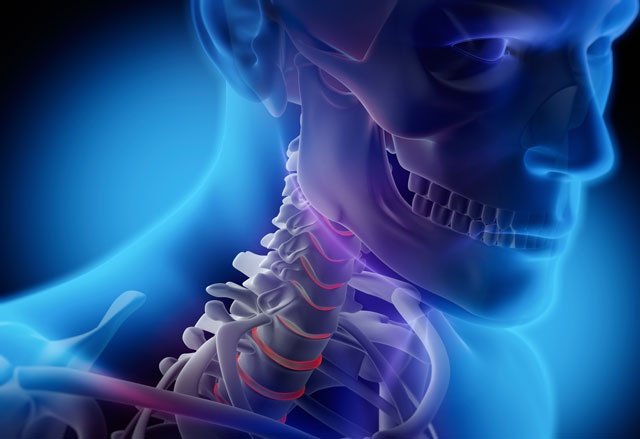Online Class: Introduction to Microbiology

no certificate
with CEU Certificate*
-
23Lessons
-
31Exams &
Assignments -
837Students
have taken this course -
30Hours
average time -
3.0CEUs
Course Description
Course Title: Unveiling the Microscopic Universe: Your Introduction to Microbiology
Prepare to embark on an unprecedented journey into the hidden realms that shape our living world. Welcome to Unveiling the Microscopic Universe: Your Introduction to Microbiology--a course where the invisible becomes visible, and the tiny titans of our world reveal their profound secrets. In a chaos of countless online courses, this is not merely another option. It's a gateway to understanding the life forces that mold our health, our environment, and our futures. Imagine not just peering through a microscope, but leaping into an entirely new dimension where microorganisms orchestrate the symphony of life. This is more than a learning experience; it's a transformative exploration that redefines how you see the world, and your place in it.
In this immersive course, you'll uncover the astonishing realities of microorganisms. They may be tiny, but their influence is monumental. Whether it's deciphering the epic battle between pathogens and human immunity or marveling at microbial marvels that are pivotal in biotechnology and medicine, your voyage into microbiology is bound to refine your intellectual landscape. The comprehension of how these microscopic entities fuel innovation and fight global challenges is not just illuminating--it's empowering. Imagine transforming your understanding and gaining insights that could innovate industries and save lives. With every module, you will piece together puzzles of nature that are as intricate as they are enlightening.
Step into a world where groundbreaking discoveries await at every turn. From the audacious journey of germ theory and its revolutionary impact on science to the nuanced symphony played out by the organelles of cells, your curiosity will be your compass. As you traverse this realm, you won't find a mere enumeration of biological terms, but a rich narrative that ignites your imagination and invites you into a world filled with wonder and opportunity. Guided by insights into microbial genetics, you will come to appreciate the delicate dance of adaptation and evolution that has sustained life on Earth for millennia.
What distinguishes this course is its unparalleled capacity to unite timeless knowledge with cutting-edge scientific advances. Grapple with the complexities of microbial growth and control, and you'll find yourself at the threshold of groundbreaking technologies in medical, industrial, and environmental applications. As you explore DNA technology, microbial metabolism, and ecological innovations, the concepts stop being abstract. They become tools you can wield to craft solutions to pressing global issues.
Weaving through this narrative is the personal empowerment that comes with knowledge. You'll not only become proficient in microbiological principles but also see their tangible applications. The insights you gain here offer you a competitive edge in your career, a richer context for your personal choices, and a profound appreciation for the biological poetry of life. This is learning that extends beyond the academic--it is life-changing knowledge that you can apply from the laboratory to your lifestyle, from global policies to personal wellness.
By the end of this transformative journey, you won't just understand microorganisms; you'll be able to articulate how they've shaped history, influence current global issues, and lay blueprints for future innovations. It's a chance to extend your impact on the world by acknowledging the microscopic allies and adversaries that inhabit it. In a landscape riddled with ho-hum courses, this stands apart as an indispensable venture into the unseen--the course that equips you for the challenges of tomorrow.
Don't just be a spectator in the unfolding narrative of scientific exploration. Step boldly into the world of microbiology where every lecture is a leap towards mastering the intricacies of life's tiniest architects. Enroll in Unveiling the Microscopic Universe: Your Introduction to Microbiology today--and join the ranks of those who refuse to simply witness history, but aspire to write it. Let this be the cornerstone of your academic and personal evolution. Your microscopic journey awaits, and with it, the keys to unlock a world of infinite possibilities.
- Completely Online
- Self-Paced
- 6 Months to Complete
- 24/7 Availability
- Start Anytime
- PC & Mac Compatible
- Android & iOS Friendly
- Accredited CEUs

Course Lessons
Lesson 1. Microorganisms and Their World-Altering Powers
The study of microorganisms offers a glimpse into life's building blocks, driving advancements in food safety and environmental sustainability. From Pasteur's Germ Theory to DNA sequencing, microbiology has facilitated monumental medical and technological progress.Lesson 2. Microbial Marvels: A Journey Through Microworlds
Pathogens, though a minority among microorganisms, pose significant threats that necessitate rigorous safety measures and innovative solutions in both medical and ecological contexts. As microbial genomics and synthetic biology advance, embracing educational initiatives can foster global resilience against emerging threats.Lesson 3. Exploring the Cellular Symphony of Microbial Life
The realm of microorganisms, fundamental yet invisible, orchestrate life’s intricacies through specialized organelles such as mitochondria and lysosomes, vital for energy production and cellular health. As science progresses, the exploration of microbiomes and bioengineering opens avenues for personal medicine and environmental rehabilitation.Lesson 4. Exploring Cellular Life: From Simplicity to Complexity
Simplistic yet efficient prokaryotes showcase remarkable adaptability, reshaping scientific techniques, while eukaryotic complexity forms the basis for advanced life systems. Both cell types share fundamental traits that emphasize biological interconnectedness and evolutionary lineage.Lesson 5. Microbial Metabolism: Exploring the Intricate Biochemistry of Microorganisms
ATP serves as an energy transfer hub within cells, supporting processes ranging from photosynthesis to cellular respiration. Its vital function lies in powering metabolic activities, from muscle contractions to molecular synthesis, highlighting its universality in living organisms.Lesson 6. Microbial Giants: Balancing Their Growth and Control in Modern Society
Societal well-being depends heavily on our ability to control microbial growth through methods like sterilization and selective removal, which prevent health hazards and structural damage. Advances in microbial control are vital in medical, agricultural, and industrial applications, safeguarding both human health and environmental balance.Lesson 7. Genetic Mastery: Microbes and the Future
Through the lens of microbial genetics, we explore how microorganisms adapt and thrive via genetic exchanges and regulated gene functions. This field fuels advancements in personalized medicine and environmental sustainability, highlighting the dual role of microbes as both threats and allies.Lesson 8. The Dual-Edged Sword of DNA Technology
Genetic engineering, akin to storytelling, alters life's scripts by modifying nucleic acids for unprecedented outcomes in diverse fields. Central to this narrative is recombinant DNA technology, with promises of innovation demanding balance against ethical concerns.Lesson 9. The Secret Lives of Bacteria: Ecological and Industrial Impacts
The unseen world of bacteria is defined by their incredible versatility, enabling them to thrive in diverse environments from the human gut to deep-sea vents. Beyond causing disease, bacteria drive essential ecological processes, support biotechnologies for sustainable innovation, and challenge our understanding of life’s adaptability.Lesson 10. Viruses: Architects of Biological Complexity
The discovery of viruses began in 1884 with C. Chamberland's germ-free solution, paving the way for differentiating viruses from bacteria and leading to the birth of virology. These early insights, combined with electron microscopy, unlocked an invisible world, allowing scientists to unravel the roles of viruses in diseases like hoof-and-mouth and yellow fever.Lesson 11. Discovering the Unseen: Life Through Microorganisms
Microorganisms like algae, fungi, protozoa, and helminthes not only sustain global ecosystems but also drive advancements in biotechnology and medicine. Understanding their complex interactions highlights their dual role as both beneficial entities and pathogenic threats.Lesson 12. Tracing the Pathogen: How Diseases Have Shaped Human History
The transition from nomadic to agricultural societies increased human proximity, fostering the spread of infectious diseases through shared environments and zoonotic transmission. Advances in trade and poorly developed sanitation practices further exacerbated disease exposure, highlighting the progression of disease spread throughout history.Lesson 13. Immune Insights: Key Components and Functions
Beyond genetic factors, a balanced diet, sleep, exercise, and stress management significantly influence our immune system's efficacy, emphasizing lifestyle's critical role in immune health. Global cooperation in immunology enhances public health initiatives, particularly in pandemic preparedness and vaccine distribution.Lesson 14. Immune Dysfunction: Causes and Treatments
Immune system disorders manifest through inadequate or excessive responses and may require medical intervention like immunosuppressive drugs or vaccinations to manage the conditions effectively. Lifestyle improvements, including stress reduction and proper nutrition, support immune function, highlighting the need for a comprehensive approach to health.Lesson 15. The Skin and Eye: Defenders Against Disease
Global initiatives have vanquished devastating diseases like smallpox, paving the path for modern vaccination strategies. These campaigns emphasize collective action, demonstrating how shared efforts in healthcare can tackle seemingly insurmountable challenges and improve public health.Lesson 16. Diseases of the CNS and PNS: A Comprehensive Journey
Peripheral neuropathy interferes with daily activities by damaging peripheral nerves, with diabetes being a primary cause. Continued research into strategies for management and prevention promises improvement in quality of life for those affected.Lesson 17. Diseases Impacting the Cardiovascular and Lymphatic Systems
Viruses such as Epstein-Barr and those causing viral hemorrhagic fevers challenge the cardiovascular and lymphatic systems with stealth and ferocity, demonstrating the necessity of multifaceted prevention strategies. Advances in chemotherapy and biosafety protocols underscore the critical role of modern medicine in combating these viral threats.Lesson 18. Understanding the Breathing Mechanism and Its Ailments
Respiratory health is upheld by the delicate balance of oxygen supply and carbon dioxide removal, mediated by the complex structure of the respiratory system inclusive of airways, lungs, and muscles. Disruptions due to pathogens and pollutants can lead to disorders like asthma, COPD, and pulmonary fibrosis, necessitating early detection and tailored management strategies to mitigate symptoms and enhance life quality.Lesson 19. Navigating the Intricacies of Digestive System Ailments
Diseases of the digestive system like GERD and Crohn's demonstrate the importance of the digestive tract's functionality in overall health, as it transforms food into life-sustaining nutrients. Awareness and advanced medical treatments offer hope in effectively managing these chronic conditions and enhancing quality of life.Lesson 20. Brief Overview of Reproductive System Diseases
The reproductive system marvels with its intricacy, from gamete production in gonads to phenomena like hermaphroditism and parthenogenesis. Despite vulnerabilities to diseases, advances in assisted reproductive technologies and genetic counseling are empowering individuals to make informed reproductive choices.Lesson 21. Exploring the Diverse Types of Vaccines
The continuous evolution of vaccines in response to scientific advancements showcases their indispensable role, highlighted by rapid development strategies exemplified during the COVID-19 pandemic. Ongoing research explores novel technologies such as DNA vaccines, offering potential for even broader protection against emergent health threats in the future.Lesson 22. Antimicrobial Agents: Fighting Microbes in the Modern World
Antimicrobial agents, crucial in combating infections, range from naturally derived antibiotics to synthetic drugs, classified into major groups like beta-lactams and macrolides, among others. Despite their historical success in reducing disease severity, the alarming rate of resistance emergence necessitates a focused effort to innovate new effective therapies.Lesson 23. Microorganisms: Tiny Yet Mighty
Microbiology extends far beyond the study of tiny organisms, impacting medicine, agriculture, and industries globally. Its advancements shape our health and environment, underlining the immense potential within the microscopic world.
Learning Outcomes
- Define the role of microorganisms as decomposers in the nutrient cycle, illustrating their importance in maintaining soil fertility and supporting plant growth.
- Identify key historical milestones in microbiology, including the development of the Germ Theory and the discovery of antibiotics, to understand their impact on modern medicine.
- Identify the role of beneficial microorganisms in agriculture and environmental sustainability, demonstrating their applications in soil fertility and waste management.
- Recognize the characteristics and classifications of microorganisms, differentiating between effective and harmful types through specific examples.
- Define the roles of mitochondria, lysosomes, centrioles, and microtubules in cellular function by examining their structure and mechanisms.
- Describe the impact of microbiomes on human health, specifically how microbial communities influence immune function and disease prevention.
- Define the structural differences between prokaryotic and eukaryotic cells, including the presence or absence of a nucleus and organelles.
- Identify at least two functions of the cell membrane in maintaining homeostasis within cells, such as regulating material exchange and protecting internal environments.
- Define the differences between aerobic and anaerobic metabolic pathways in microorganisms based on their specific energy sources and byproducts.
- Identify examples of microbial species and classify them according to their metabolic processes such as catabolism and anabolism, and their environmental niches.
- Demonstrate the ability to apply knowledge of sterilization, selective removal, and temperature manipulation techniques in various practical settings to limit microbial expansion effectively.
- Recognize the impact of unchecked microbial growth on human health, agriculture, and industrial infrastructures and identify primary control methods.
- Recognize the role of microbial genetics in developing genetically modified organisms for medical and industrial applications.
- Demonstrate mastery of lesson content at levels of 70% or higher.
Additional Course Information

- Document Your Lifelong Learning Achievements
- Earn an Official Certificate Documenting Course Hours and CEUs
- Verify Your Certificate with a Unique Serial Number Online
- View and Share Your Certificate Online or Download/Print as PDF
- Display Your Certificate on Your Resume and Promote Your Achievements Using Social Media

Choose Your Subscription Plan
No Certificate / No CEUs
This course only
| Includes certificate | X |
| Includes CEUs | X |
| Self-paced |

|
| Instructor support |

|
| Time to complete | 6 months |
| No. of courses | 1 course |
Certificate & CEUs
This course only
| Includes certificate |

|
| Includes CEUs |

|
| Self-paced |

|
| Instructor support |

|
| Time to complete | 6 months |
| No. of courses | 1 course |
Certificates & CEUs
Includes all 600+ courses
| Includes certificate |

|
| Includes CEUs |

|
| Self-paced |

|
| Instructor support |

|
| Time to complete | 12 Months |
| No. of courses | 600+ |
Certificates & CEUs
Includes all 600+ courses
| Includes certificate |

|
| Includes CEUs |

|
| Self-paced |

|
| Instructor support |

|
| Time to complete | 24 Months |
| No. of courses | 600+ |
Student Testimonials
- "The course is so informative that adds my knowledge as a Laboratory Assistant. What I learned in this course was that it encourage me to pursue as a Laboratory Technician." -- Frank E.
- "It was great." -- Philip Z.
- "The instructer was very helpful when I contacted him on specific issues and returned our assignments promptly." -- Helen B.
- "I think everything begins with a good instructor and this class was a success, because he cared to explain and make sure that the student felt comfortable." -- Yolanda A.
- "James was very responsive and helpful to my questions." -- Kathy S.
- "Would return to take another course in the future." -- Daniel T.
- "Alot of useful information. Presented in an easy to read format, organized" -- Daniel T.
- "My instructor worked hard to keep me informed with his assessments of my assignments and exams." -- Tommy R.
- "Although I work in Bacteriology and have very limited knowledge of Biology I used this course to help me understand some of what I deal with daily. To me, all the materials were useful/helpful." -- Tommy R.
- "The whole structure of this course is so well organised that it has made my learning easy as well as interesting! A Great program!" -- Irene C.







